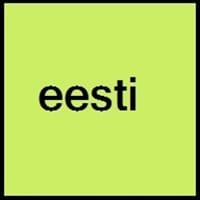Cantonese and Estonian
- Cantonese have lot of slangs, many of them include words that do not make sense at all and some also have English in them.
- Even though Cantonese and Mandarin are dialects of Chinese, Cantonese has 8 tones instead of Mandarin's 4.
- Estonian language is considered to be powerful symbol of Estonian identity and culture.
- Estonian language has adopted many words with Finnish language.
All Cantonese and Estonian Dialects
Most languages have dialects where each dialect differ from other dialect with respect to grammar and vocabulary. Here you will get to know all Cantonese and Estonian dialects. Various dialects of Cantonese and Estonian language differ in their pronunciations and words. Dialects of Cantonese are spoken in different Cantonese Speaking Countries whereas Estonian Dialects are spoken in different Estonian speaking countries. Also the number of people speaking Cantonese vs Estonian Dialects varies from few thousands to many millions. Some of the Cantonese dialects include: Guangzhou, Xiguan. Estonian dialects include: Keskmurre , Tartu. Also learn about dialects in South American Languages and North American Languages.
Cantonese and Estonian Speaking population
Cantonese and Estonian speaking population is one of the factors based on which Cantonese and Estonian languages can be compared. The total count of Cantonese and Estonian Speaking population in percentage is also given. The percentage of people speaking Cantonese language is 16.00 % whereas the percentage of people speaking Estonian language is Not Available. When we compare the speaking population of any two languages we get to know which of two languages is more popular. Find more details about how many people speak Cantonese and Estonian on Cantonese vs Estonian where you will get native speakers, speaking population in percentage and native names.
Cantonese and Estonian Language Codes
Cantonese and Estonian language codes are used in those applications where using language names are tedious. Cantonese and Estonian Language Codes include all the international language codes, glottocodes and linguasphere.





